Water - the neglected nutrient
Water is the most critical nutrient for poultry. In addition to being a nutrient, water aids in digestion and absorption and respiration in birds. Water also helps to remove waste, lubricates joints, and is a major component of blood and a necessary medium for many chemical reactions within the bird’s body. Although the importance of providing enough water as per the bird’s requirement and adequate access to water is well accepted, the importance of water quality on poultry nutrition performance is often overlooked.
Water Quality:
Water quality is important across all livestock species; more so in poultry as, the water intake is on an average 2-3 times that of the feed intake in birds. Quality of water may vary with factors like source of water, the season, the water management processes etc. The drinking water for poultry should be fit for its consumption and should be checked at regular intervals for various parameters to assure of its quality. Often, it is the pH that is measured as an indicator of water quality; instead, pH along with parameters like hardness, microbiology, ORP, TDS etc. need to be given due importance as well. The various parameters and their relevance is as below,
pH:
pH in simple terms is the level of free H+ ions in water, that determines the acidity or alkalinity of water. Acidification of water is an established concept that helps in keeping all the pathogenic microbes at bay, if optimum acidic levels of up to 3.8-4.0 pH is achieved in the water. pH meters can be used to check the water pH.
Hardness:
Hardness is an indication of the amount of inorganic minerals in water in the form of carbonates/sulphates. Hardness and pH do have a correlation, which is not proportional all the time. Equivalency of high pH to hard water and the vice-versa of low pH to soft water need not essentially hold true. Hardness is a crucial parameter to be checked when we are considering acidification and stabilization of water pH. Water softeners can reduce water hardness but not necessarily the water pH, in which case, water acidification should be the resort.
Microbiology:
Presence of microbes in water specifies possible faecal contamination, pipeline contamination, presence of biofilms etc. E.coli, clostridium and salmonella, should be practically absent in water. Improper pipeline cleaning will lead to biofilm formation in the pipes, reducing the quantity and quality of water that is being offered to birds, as shown in Fig. 1.
Fig. 1: Biofilm clogging the pipeline
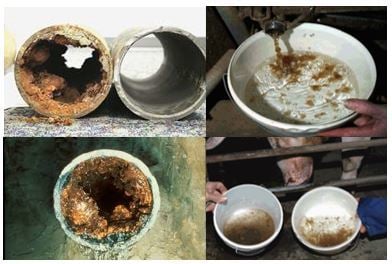
Oxidation Reduction Potential (ORP):
ORP is a measure of tendency of a molecule to acquire electrons and thereby be reduced. It is measured in millivolts and is directly related to the disinfection of water in terms of killing of microbes. Optimal ORP is 650-700 mV, as shown in Table 1. Lesser than 650 mV will lead to microbial growth and not disinfect the water optimally and more than 700 mV ORP could reduce the water intake.
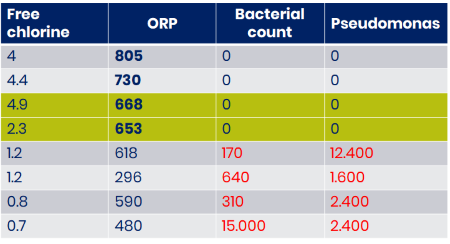
Table 1: Relation between ORP and microbiology
Total Dissolved Solids (TDS):
TDS represents the total concentration of inorganic salts and organic matter in water. A TDS value of >3000 ppm is not satisfactory for poultry. TDS is often confused with hardness, it should be borne in mind that the latter is a measure of inorganic salts alone, whereas TDS of both inorganic and organic matter.
Management of water:
Following steps need to be considered with respect to water management
- Test the water regularly for required parameters
- Maintain hygiene of tanks, canisters, pipelines, waterers etc.
- Maintain proper temperature – too hot and too cold a water, will reduce water intake.
- Use adequate water treatments
Water treatments can be like,
- Acidification
- Sanitization
- Disinfection
- Medications (vaccinations) as and when required
Few key points to be stressed upon whilst talking of water quality are,
- Your money invested on water sanitation would go as a waste, if the water were not adequately acidified. Chlorination is the widely used method of water sanitation. Chlorine will be available in two forms when dissolved in water – as hypochlorous acid and hypochlorite. The former is a fast acting compound as compared to the latter, which is quite slow in killing action of microbes, as shown in Fig. 2. The optimal pH for efficient killing of microbes when sanitation is practiced, as per the below figure is 4-5.
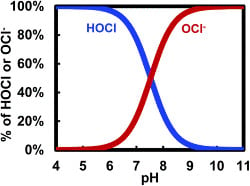
- Maintain optimal ORP to kill microbes effectively. As indicated in Table 1 above, an optimal ORP of 650mV needs to be maintained.
- Stability of pH is the main criteria to be given emphasis rather than transient drop in pH, while judging the water quality. The immediate drop in pH can be achieved with any acidifier; nevertheless, the aim should be to maintain that specific pH for a longer duration to preserve water quality throughout. Measurements like water titration, use of on-farm technologies like i-Dip need to be adopted, to ensure that optimal water quality is achieved, as shown in Fig. 3a and 3b.
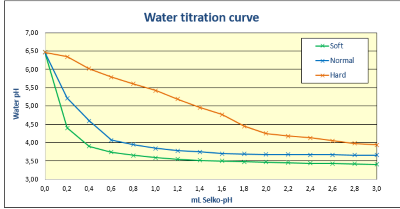
Fig 3a: Water titration curve as a measure to judge water quality
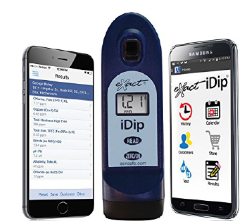
Fig 3b: i-Dip – on-farm tool to judge water quality
- Flush and clean the water pipelines adequately. Pipelines are for conducting the water to birds and not the microbes, so ensure to have a cleaning protocol in place and for its effective implementation, if we want clean water to be taken up by birds. Water quality should be measured at all the levels, as shown in Fig. 4 below, nevertheless, the most critical, is to measure it at the bird level.
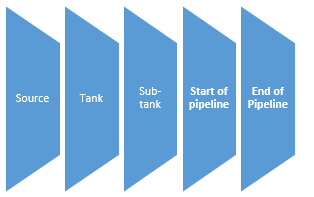
Fig. 4: Water quality measurement points
- Check the compatibility of medicines when water acidifiers are used. Acidifiers and sanitizers are recommended not to be used, a day before and after vaccinations that are intended through water route. Not all antibiotics are compatible with acidic water, their efficiency might be reduced when water is acidic, including water that naturally have a pH less than 7.
- Last but not the least, water can act as one of the potential sources of infection that impacts gut health. Strategies to achieve optimal gut health should cover water route as well. One such concepts is inclusion of water acidifiers that are capable of protecting both water quality as well as effective in promoting gut health.
Conclusion:
Water is a critical and crucial nutrient for Animal Nutrition. Water is available to us, almost free and is taken as granted for its quality, with no due emphasis being placed on it. Water quality keeps changing from season to season, from source to source and from farm to farm. Additionally, in few instances, when there is severe scarcity of water, water is purchased from outside, which places a major threat on its quality aspect. Water needs to be checked on a regular basis for required parameters from an authentic laboratory and/or using on-farm technologies. Water is an indispensable natural resource and as responsible citizens, we all should take steps to preserve its quantity and quality. Poultry producers should put in efforts to provide safe water to birds, which would then ensure healthy gut conditions that would consequently improve the overall bird performance.